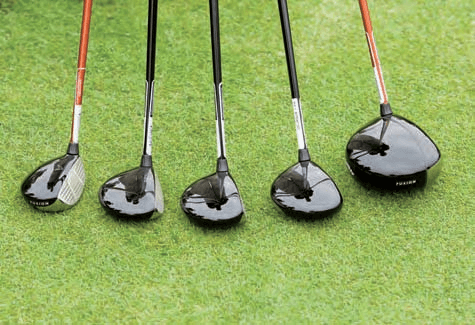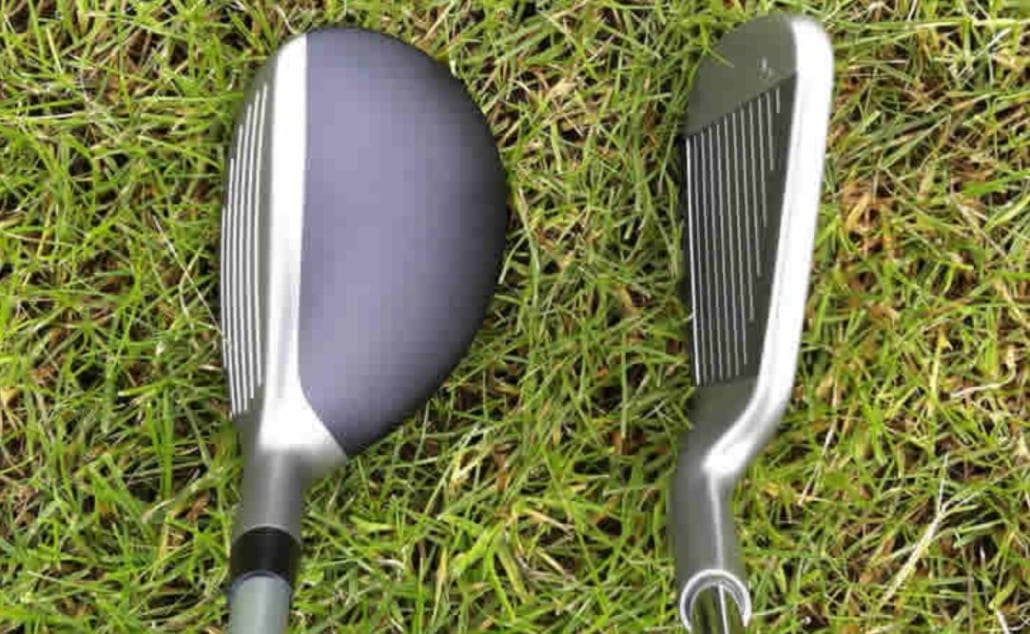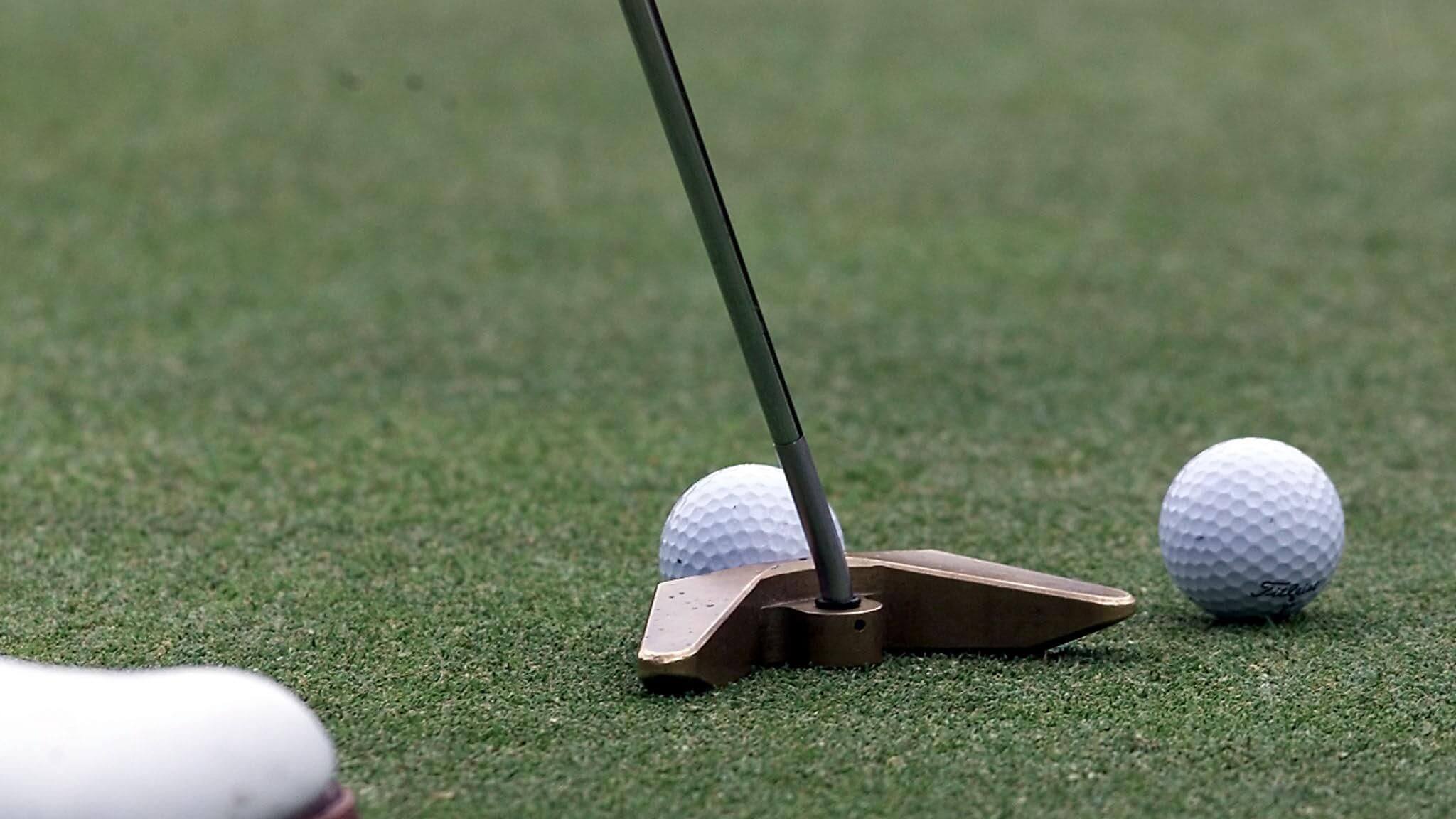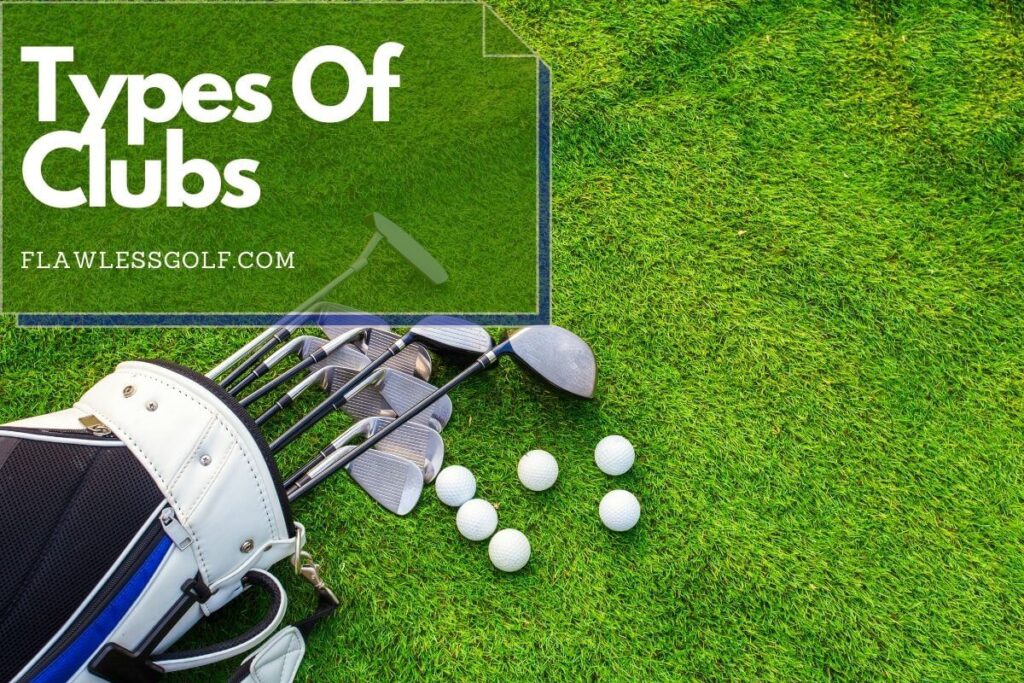Today’s technology enables people to hit a golf ball farther than ever before. It means that golf clubs are more expensive (and cooler-looking) as well. Clubs differ in size, shape, length, and purpose.
Each club is designed to hit the ball a certain yardage, a distance that is affected by many factors. This article discusses the main types of clubs you should consider including in your bag. Let’s take a look.
Here are the 6 main types of golf clubs:
- Driver
- Fairway woods
- Irons
- Hybrids
- Wedges
- Putters
Table of Contents
The Driver And Woods
The driver and the woods are the longest clubs and usually have the largest clubheads. They also hit the ball the farthest when swung properly.
Drivers, which are almost always used to hit the ball off the tee, vary in length, clubhead size, and loft. While many professionals use drivers with lofts of less than 10 degrees, beginners should consider a greater loft, which helps get the ball into the air more easily.
In general, men should look for a loft of 9.5 to 12.0 degrees, and women 12.0 to 15.5 degrees. As for the driver’s clubhead size, the bigger, the better.
Having a large clubface increases your margin for less-than-perfect hits, where even shots struck off-center tend to go farther and somewhat straighter than in the past, when clubheads were smaller.
Driver

Fairway woods look similar to drivers. The main difference is the size of the clubhead (fairway woods are smaller) and the loft of the clubface (fairway woods have a higher degree of loft).
Although they’re called woods because the clubhead used to be made of wood, most woods today have clubheads made of metal; they are sometimes referred to as metal woods. Woods come in numbers that ascend with the amount of loft the clubface has: 2-wood, 3-wood, 4-wood, 5-wood, 7-wood, and 9-wood.
The higher the number, the more loft the club has, and the more loft, the higher and shorter the ball should travel when hit properly.
It is important to keep head covers on both your driver and your fairway woods to prevent their longer shafts from being damaged while in your bag.
Fairway Woods

Irons And Hybrids

Irons have a completely different shape and size of clubhead than woods and drivers do. They are numbered in an ascending order (from 1 to 9) that corresponds to the amount of loft the clubface has, and each iron comes in different lengths.
The more loft an iron has, the shorter your shot should travel. Iron clubheads come in a variety of types, including:
- Forged: A block of solid metal is shaved down to form this club. The detailed process used usually makes forged irons the most expensive type.
- Cast: Metal is poured into a mold to make this club, allowing a wider range of shapes to be used.
- Offset: The term offset describes the point at which the shaft joins the clubhead: The leading edge of this club is slightly behind the hosel. Offset irons are highly recommended for beginners since they help keep the hands in proper position at impact.
- Cavity-back: This type of iron has a space carved out just behind the clubface, enabling more perimeter weighting around the edge of the club. This extra weighting makes the iron more forgiving of off-center hits by creating a larger sweet spot.
A starter set of irons should be offset with a cavity back and a low center of gravity. The offset design of the shaft will help you visually when aiming the club as well as keep your hands ahead of the ball. The cavity-back design and low center of gravity will make the ball fly higher if struck properly.
In recent years, an increasing number of professional and amateur golfers are replacing the 3-iron and 4-iron with a new type of club called a hybrid. Hybrid clubs blend a wood and an iron and help players get the ball up into the air more effectively than the low-numbered irons.
Because hybrids have longer shafts than irons do, you can generate more swing speed and more distance. A selection of hybrids, which vary by degree of loft, are available, although each manufacturer labels its products differently, unlike irons, which are always identified by the same numbers.
Hybrids can also be used for approach shots around the green. When purchasing a new set of clubs, we recommend that you substitute hybrids, which can be purchased separately, for the lower irons.
Wedges

Wedges are the clubs with the highest amount of loft on the clubface. You use them for approach shots to the green, whether you are in the fairway, rough, or sand. Because of their loft, these clubs add height to a shot, as well as impart spin on the ball because of the angle at which the clubface strikes the ball.
Many types are available, including the pitching wedge, gap wedge, sand wedge, and lob wedge, in ascending order of loft on the clubface. As with woods, the degree of loft determines just how high in the air the ball will go:
The greater the degree of loft, the higher the ball goes if struck properly. A starter set of golf clubs usually includes a pitching wedge and a sand wedge.
A standard pitching wedge has a loft of 48 degrees, while a standard sand wedge comes with a 54- to 57-degree loft. As your ability to control the distance of your shots improves, consider purchasing additional wedges with different lofts (i.e., 52, 56, 58, and 60 degrees) that can be used for particular yardages.
Putters

The object of the game of golf is to get the ball into the hole, and the club that almost always does that is the putter. This club comes in many different shapes and sizes. The most important factor is what you feel most comfortable using.
From bottom to top:
- Scotty Cameron Detour: This type of putter contains visual elements (such as a curving extension behind the clubface) to promote a certain type of swing path (inside going back, square at impact, and inside going through).
- Blade: This standard putter type features a very small “sweet spot” on the clubface, making it hard for beginners to use successfully.
- Futura: Large mallet-type putters like this one help distribute weight behind the clubface, which can help you balance the club through the putter stroke.
- Classic: This type of putter offers a sightline right behind the clubface and is weighted on the heel and toe to help promote a smooth, balanced stroke.
- Odyssey Two Ball: This type of putter features white circles shaped like golf balls directly behind the clubface to help you align the putt visually.
Whatever type you choose, keep a head cover on your putter to keep it from being damaged while in your bag.
Related Post: How to choose golf clubs?



